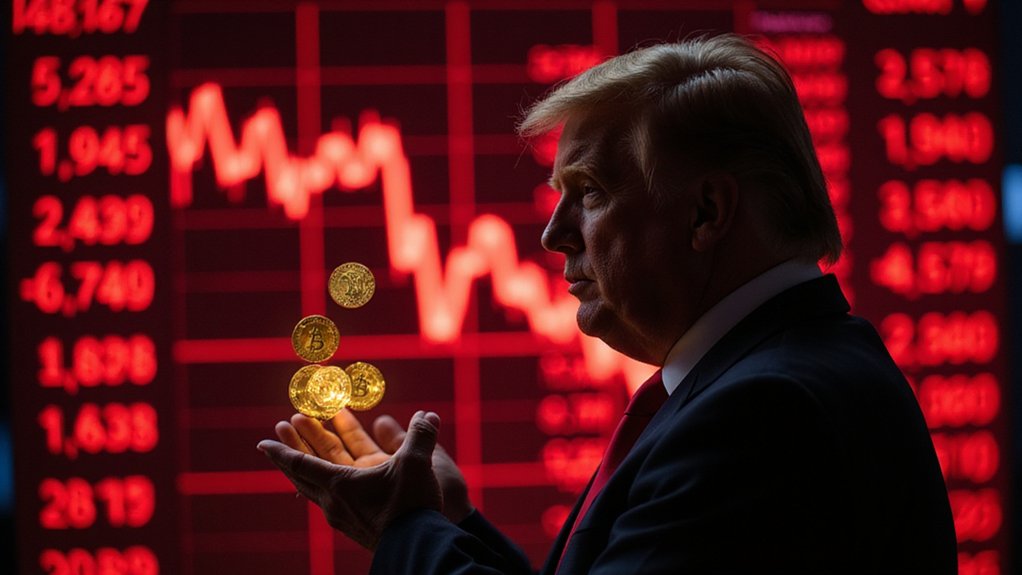The son of a former president who once dismissed Bitcoin as a “scam based on thin air” now projects the cryptocurrency will reach $175,000 by the end of 2025—a forecast that would require roughly a 50% appreciation from current levels of $115,244.
Eric Trump’s transformation into what he terms a “Bitcoin maxi” represents perhaps the most striking ideological pivot in recent crypto discourse, complete with long-term projections exceeding $1 million per token.
Eric Trump’s metamorphosis into a “Bitcoin maxi” marks cryptocurrency’s most dramatic ideological conversion, projecting tokens beyond $1 million.
Speaking at Wyoming’s SALT conference, Trump positioned Bitcoin as the antidote to traditional finance‘s glacial settlement processes and exorbitant payment rails—a narrative that conveniently aligns with his family’s expanding crypto empire.
The Trump organization now boasts Truth Social’s $2 billion Bitcoin treasury alongside Donald Trump’s $57 million crypto startup income, suggesting these aren’t merely speculative musings but strategic positioning statements.
Trump’s bullish outlook coincides with his co-founding of American Bitcoin, a mining enterprise pursuing what he describes as “the world’s most efficient Bitcoin accumulation platform.”
The firm’s merger with Gryphon Digital Mining promises Nasdaq listing transparency, with the Trump brothers maintaining a 20% stake while Hut 8 controls the remainder. The merger represents American Bitcoin’s formation through American Data Center Company consolidation, positioning the venture for enhanced market access.
This venture consumes “over half his professional time,” according to Trump’s own accounting.
Market dynamics appear supportive of his thesis, with $365 million flowing into Bitcoin ETFs despite Ethereum ETFs outperforming their Bitcoin counterparts in July 2025. The broader crypto ecosystem’s expansion, valued at $2.1 billion in 2024 and projected to reach $5 billion by 2030, suggests institutional confidence in digital assets beyond mere speculative interest.
Perhaps more intriguingly, Trump cites sovereign interest in the space, noting an unnamed entity’s approximately 200,000 BTC holdings worth roughly $22 billion—institutional validation that extends beyond corporate treasuries into government reserves.
The technical foundation for Trump’s optimism rests on blockchain’s purported ability to eliminate payment inefficiencies, though scalability challenges persist.
Layer-2 solutions like Bitcoin Hyper represent potential workarounds, assuming adoption materializes as envisioned.
Whether Bitcoin reaches Trump’s ambitious targets remains speculative, but his family’s financial commitment suggests genuine conviction rather than promotional theater.
The convergence of institutional adoption, sovereign interest, and infrastructure development creates conditions that could validate even seemingly audacious price predictions—assuming traditional monetary systems prove as inadequate as Trump’s narrative suggests.








